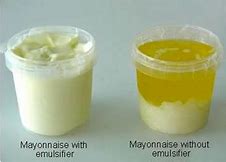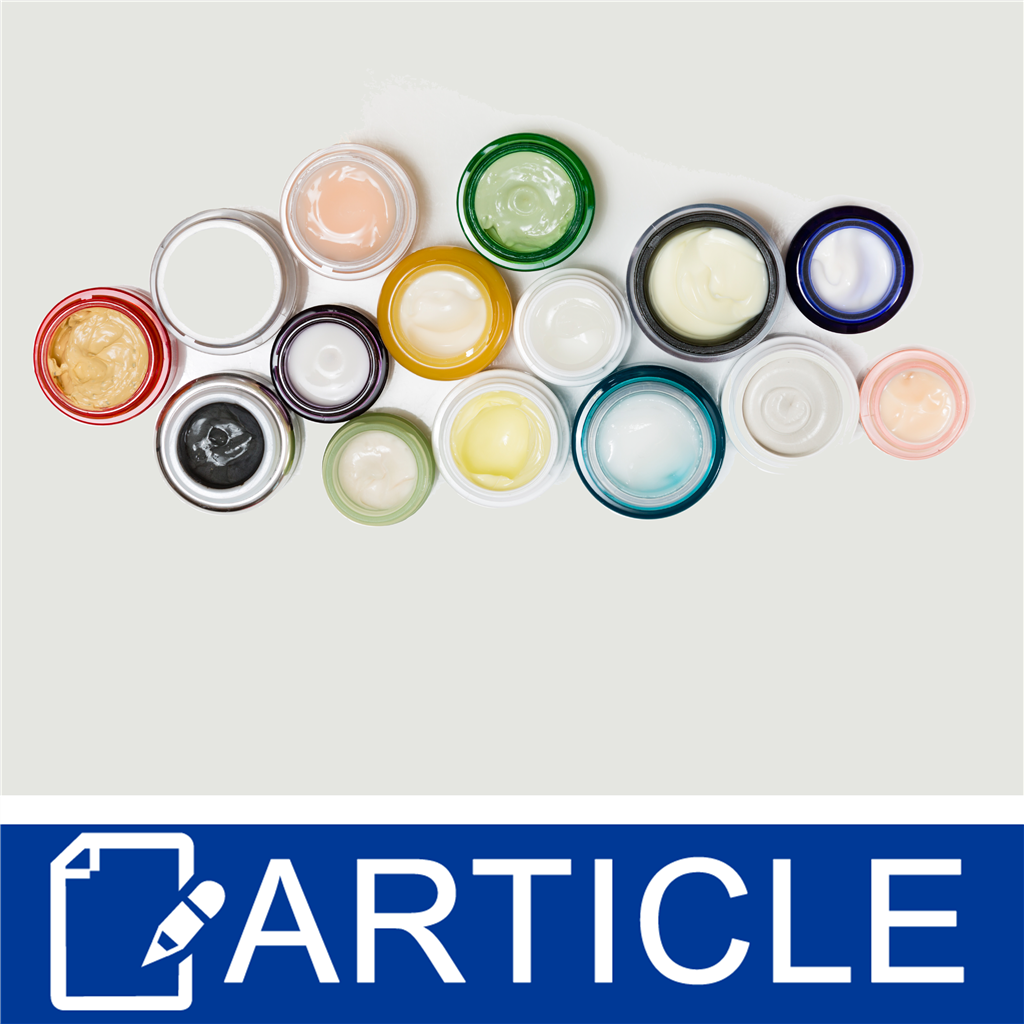The Science Behind Emulsifiers and Their Importance in Everyday Products
Emulsifiers are vital components that allow the mixing of oil and water, 2 generally immiscible materials. Their one-of-a-kind molecular structure allows them to lower surface area stress, creating steady emulsions in different items. This function is important for preserving the wanted appearance and top quality in food, cosmetics, and pharmaceuticals. emulsifiers. As the need for innovative formulations grows, understanding the science behind emulsifiers ends up being significantly crucial. What ramifications might this have for future product advancement?

What Are Emulsifiers?
Emulsifiers are materials that make it possible for the blending of two immiscible fluids, such as oil and water, producing a secure blend known as an emulsion. These representatives play a vital duty in different sectors, including food, cosmetics, and drugs. Emulsifiers have distinct molecular frameworks, commonly featuring both hydrophilic (water-attracting) and hydrophobic (water-repelling) parts. This double nature enables them to engage with both sorts of fluids, assisting in the development of solutions and avoiding splitting up.
Common examples of emulsifiers consist of lecithin, commonly found in egg yolks, and mono- and diglycerides, which are often used in baked goods. In food, emulsifiers enhance appearance and uniformity, enhancing general high quality. In cosmetics, they assist in developing steady creams and creams. The convenience of emulsifiers makes them crucial in producing a wide variety of daily items, making certain that numerous active ingredients blend effortlessly for excellent efficiency and consumer fulfillment.
Just How Do Emulsifiers Function?
Exactly how do emulsifiers produce stable mixes from 2 typically unmixable liquids? Emulsifiers function by reducing the surface area stress between oil and water, which are inherently incompatible as a result of their molecular frameworks. They possess both hydrophilic (water-attracting) and hydrophobic (water-repelling) homes, allowing them to communicate with both stages. When an emulsifier is presented to a blend of oil and water, its particles position themselves at the interface, with the hydrophilic end in the water and the hydrophobic end in the oil. This arrangement stabilizes the solution by preventing the oil beads from dividing and coalescing from the water phase. The outcome is an uniform blend, referred to as an emulsion, which can be either oil-in-water or water-in-oil, depending upon the predominant phase. Because of this, emulsifiers play a necessary role in various items, making certain uniformity and stability in formulas varying from food items to cosmetics.
Kinds of Emulsifiers in Food Products
In the domain name of food production, different kinds of emulsifiers are utilized to improve appearance, stability, and total high quality. These emulsifiers can be categorized mostly into synthetic and all-natural types. Natural emulsifiers, such as lecithin, originated from soybeans or egg yolks, are commonly made use of in products like mayonnaise and delicious chocolates. They are favored for their clean tag appeal and useful benefits.
Synthetic emulsifiers, like mono- and diglycerides, are commonly utilized in refined foods for their cost-effectiveness and convenience. These compounds assist preserve the preferred consistency in items such as margarine and salad dressings. Furthermore, polysorbates, one more group of synthetic emulsifiers, boost the security of emulsions in gelato and sauces. Each kind of emulsifier plays a necessary duty in making sure the preferred sensory qualities and shelf-life of food products, eventually improving the customer experience.
The Function of Emulsifiers in Cosmetics
While the primary function of emulsifiers in cosmetics is to mix oil and water-based active ingredients, their influence extends past plain stablizing. Emulsifiers function as vital elements that improve the structure and uniformity of items such as lotions, lotions, and serums. By creating a steady mix, they permit for uniform circulation of energetic ingredients, making certain that consumers get the designated benefits of the formula.
Emulsifiers contribute to the sensory experience of cosmetic items. They can influence the feeling and absorption of an item on the skin, providing a smoother application and a much more attractive surface. Additionally, emulsifiers play a function in prolonging the service life of cosmetics by avoiding the splitting find up of active ingredients, consequently keeping item stability in time. This stablizing is crucial for consumer safety and security and efficiency, making emulsifiers vital in the solution of top quality cosmetic products.
Advantages of Utilizing Emulsifiers
Emulsifiers supply many advantages that prolong beyond their foundational role in cosmetics. These materials boost the security and appearance of various products, guaranteeing a consistent uniformity that is functionally efficient and aesthetically attractive. In food products, emulsifiers add to boosted mouthfeel and expand life span by protecting against splitting up of ingredients, which is important for preserving top quality and safety. Furthermore, emulsifiers can facilitate the absorption of nutrients in dietary formulations, maximizing their wellness advantages.
In the pharmaceutical industry, emulsifiers play a basic function in medication shipment systems, enhancing the bioavailability of energetic ingredients. They also help in creating individual care products, ensuring that energetic components are uniformly distributed for optimum efficiency. Overall, the unification of emulsifiers significantly enhances product efficiency throughout diverse applications, making them essential in everyday items. Their multifunctional nature emphasizes their relevance in enhancing both consumer experience and item long life.
Common Emulsifiers and Their Resources

In comparison, synthetic emulsifiers like mono- and diglycerides are derived from glycerol and fats. These emulsifiers are commonly made use of in processed foods for their efficiency and cost-efficiency. Polysorbates, another synthetic option, are he has a good point extensively used in different applications, consisting of pharmaceuticals and cosmetics. Each kind of emulsifier serves details functional functions, ensuring security and consistency in the solutions of day-to-day products.
Future Patterns in Emulsifier Study and Growth

Furthermore, advancements in biotechnology are leading the way for the advancement of customized emulsifiers that enhance stability and texture while decreasing environmental impact. This fad is matched by an expanding passion in operation waste materials from food manufacturing as possible emulsifier resources, consequently advertising a circular economic climate.
In addition, customer awareness relating to health and wellness and wellness is driving the requirement for emulsifiers that sustain dietary profiles, such as those that can deliver useful benefits - emulsifiers. As these trends develop, the future of emulsifier research will likely stress both sustainability and performance, satisfying the transforming needs of industries and consumers alike
Often Asked Concerns
Are Emulsifiers Safe for Intake in Food Products?
Emulsifiers are typically taken into consideration secure for usage in food items. Governing agencies assess their use, ensuring they fulfill safety and security standards. Nevertheless, individual level of sensitivities may differ, requiring caution for those with certain nutritional limitations or allergic reactions.
Can Emulsifiers Cause Allergies in Some People?

How Do Emulsifiers Impact the Life Span of Products?
Emulsifiers improve product stability by protecting against splitting up of active ingredients, which can prolong life span. Their capacity to preserve uniformity helps protect flavors and appearances, ultimately adding to the long life of numerous food and cosmetic products.
Exist Natural Alternatives to Artificial Emulsifiers?
Natural choices to artificial emulsifiers consist of active ingredients like lecithin, guar gum tissue, and xanthan periodontal. These substances can effectively stabilize mixtures, providing choices for those looking for to prevent artificial ingredients while keeping item uniformity and quality.
What Rules Govern using Emulsifiers in Food and Cosmetics?
Emulsifiers in food and cosmetics are regulated by agencies like the FDA and EFSA, which develop safety and security evaluations, permissible quantities, these details and labeling requirements to assure consumer safety and security and product effectiveness across numerous markets.
In food items, emulsifiers improve appearance and uniformity, boosting overall quality. Additionally, emulsifiers play a role in expanding the rack life of cosmetics by avoiding the separation of components, thereby keeping item stability over time. In food items, emulsifiers add to enhanced mouthfeel and prolong rack life by protecting against separation of active ingredients, which is necessary for maintaining quality and safety and security. Overall, the consolidation of emulsifiers significantly enhances product efficiency across diverse applications, making them vital in day-to-day items. Emulsifiers are normally thought about risk-free for usage in food products.